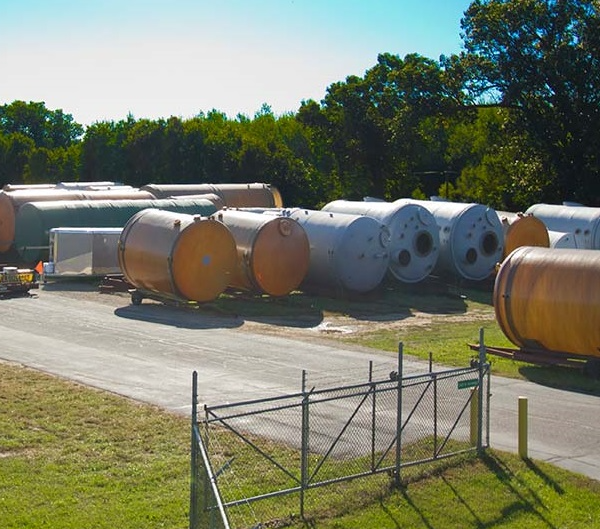
Polypropylene (PP) spunbond nonwoven fabric has rapidly gained popularity due to its versatile properties and wide range of applications across multiple industries. Spunbond non woven fabric combines strength, durability, and cost-efficiency, making it a favored material in sectors like healthcare, agriculture, packaging, and construction. In this article, we will delve into the world of PP spunbond nonwoven fabric, exploring its advantages, uses, and environmental impact.
Introduction to PP Spunbond Nonwoven Fabric
PP spunbond nonwoven fabric is created by extruding thermoplastic polymers (polypropylene) into fine filaments, which are then bonded together to form a flat, porous sheet. The material stands out for its lightweight structure, combined with impressive strength and durability.
The nonwoven fabric market has seen substantial growth, particularly in industries seeking alternatives to traditional woven fabrics. Spunbond nonwoven fabrics offer superior performance characteristics for both disposable and reusable products.
The Evolution of Nonwoven Fabrics
The history of nonwoven fabrics dates back to the mid-20th century when industries began exploring new methods for fabric production. Nonwoven technology has since evolved, incorporating innovative processes like spunbonding to create fabrics that meet modern industrial demands. The transition from traditional textiles to nonwovens has revolutionized sectors like healthcare and packaging.
Key Properties of Spunbond Nonwoven Fabric
One of the standout features of PP spunbond nonwoven fabric is its durability. Despite being lightweight, it offers excellent tensile strength, making it suitable for demanding applications like medical gowns and geotextiles. Its breathability ensures comfort in applications where airflow is crucial, while the flexibility of the fabric allows it to be tailored for various purposes.
Advantages of Using PP Spunbond Nonwoven Fabric
The use of PP spunbond nonwoven fabric comes with several advantages:
- Eco-friendliness: The fabric is recyclable and contributes to reducing the overall plastic waste burden.
- Cost-effectiveness: Spunbond nonwoven fabrics are generally more affordable to produce compared to woven materials, making them ideal for large-scale production.
Spunbond Nonwoven Fabric in Various Industries
Medical Sector
PP spunbond nonwoven fabric is extensively used in medical products such as surgical masks, gowns, and drapes due to its ability to resist bacteria while remaining breathable.
Agriculture
Farmers utilize spunbond nonwoven fabric in mulching to protect crops from harsh weather and pests, while allowing water and nutrients to reach the plants.
Packaging and Consumer Products
In packaging, PP spunbond nonwoven fabric is favored for its tear resistance and lightweight nature. It is commonly used in tote bags, garment bags, and even disposable diapers.
Construction and Geotextiles
In construction, spunbond nonwoven fabric serves as a protective layer in geotextiles, offering soil stabilization and erosion control.
How PP Spunbond is Manufactured
The spunbond process involves extruding melted polymer through fine nozzles to form continuous filaments. These filaments are then cooled and bonded to create a durable fabric. Advanced technologies like air laying and thermal bonding ensure consistent fabric quality.
Environmental Benefits of Spunbond Nonwoven Fabric
Spunbond nonwoven fabrics are not only recyclable but also consume fewer raw materials during production. Their eco-friendly nature makes them an excellent alternative to traditional plastics, which are notorious for environmental harm.
Popular Types of PP Spunbond Nonwoven Fabric
PP spunbond nonwoven fabric comes in various types, each tailored to specific applications. These types differ in their composition, structure, and thickness, allowing for a wide range of uses.
Single-Layer Spunbond Nonwoven Fabric
Single-layer spunbond fabric is commonly used in applications where simplicity and cost-efficiency are key. It offers a straightforward, lightweight option suitable for disposable items like medical gowns, face masks, and packaging materials.
Multi-Layer Spunbond Nonwoven Fabric
Multi-layer spunbond fabric, on the other hand, is designed for more demanding applications. It combines multiple layers of Spunbonded nonwoven fabric, which enhances durability, strength, and resistance to wear and tear. This type is often used in industrial applications, such as geotextiles for construction or heavy-duty agricultural covers.
Customized Spunbond Fabrics for Specialized Uses
Manufacturers can tailor spunbond fabrics to meet specific requirements, such as adding water repellency, UV protection, or fire resistance. These customized fabrics are particularly useful in industries like automotive, where specialized materials are essential for safety and performance.
Comparing PP Spunbond with Other Nonwoven Materials
Nonwoven fabrics come in various forms, each with unique characteristics that make them suitable for different uses. Comparing PP spunbond nonwoven fabric with other types can help you determine the best option for your specific needs.
PP Spunbond vs. Meltblown Nonwoven Fabric
PP spunbond and meltblown fabrics are often confused due to their similar appearance, but they serve very different purposes. While spunbond fabric is known for its strength and durability, meltblown fabric excels in filtration. Meltblown materials are commonly used in products like air filters and N95 masks because of their ability to trap tiny particles, while spunbond is better suited for applications requiring resilience and structure.
Spunbond vs. SMS (Spunbond-Meltblown-Spunbond) Fabric
SMS fabric is a combination of spunbond and meltblown layers. It provides both the strength of spunbond and the filtration efficiency of meltblown. This combination makes SMS fabric ideal for medical applications such as surgical drapes and sterile wraps, where both barrier protection and durability are critical.
When to Use Spunbond vs. Other Nonwoven Materials
Spunbond is the go-to material for applications that prioritize durability, breathability, and cost-effectiveness. It’s often used for disposable items, like medical supplies, that require strength without sacrificing affordability. On the other hand, meltblown and SMS fabrics are preferred when filtration and fine particle trapping are paramount, such as in air and liquid filtration systems.
How to Choose the Right PP Spunbond Nonwoven Fabric for Your Needs
Selecting the correct PP spunbond nonwoven fabric depends on several factors, including the intended application, required durability, and environmental conditions.
Weight and Thickness
The weight and thickness of spunbond fabric are critical considerations. Heavier fabrics offer more strength and durability, making them suitable for industrial and outdoor applications. For lightweight applications, such as disposable medical products or packaging, thinner fabrics may be more appropriate.
Strength and Durability Requirements
If the fabric needs to withstand high levels of stress, abrasion, or tension, a multi-layer spunbond material or one with enhanced durability features may be the best choice. For instance, heavy-duty spunbond fabrics are commonly used in geotextiles for construction, as they can handle soil pressure and environmental exposure.
Environmental Considerations
In applications like agriculture, where the fabric will be exposed to outdoor elements, choosing a UV-resistant or water-repellent variant is essential. These treatments ensure the material remains functional and durable, even under harsh conditions.
Common Misconceptions About Spunbond Nonwoven Fabric
While PP spunbond nonwoven fabric is widely used and appreciated, there are some misconceptions that can lead to confusion about its effectiveness and environmental impact.
Myth: Spunbond Fabric Isn’t Strong Enough for Industrial Use
This misconception stems from the fabric’s lightweight nature, but spunbond nonwoven fabric is actually highly durable and suitable for demanding applications like construction and geotextiles. The multi-layer variants, in particular, are engineered to withstand significant stress and exposure to harsh environments.
Myth: Spunbond Fabric Contributes to Environmental Harm
Another common myth is that PP spunbond fabric is harmful to the environment. In reality, spunbond fabric is recyclable and offers a more sustainable alternative to single-use plastics. When properly recycled, it reduces waste and minimizes environmental impact.
Myth: Nonwoven Fabrics Are Inferior to Woven Fabrics
Nonwoven fabrics, especially spunbond, are often perceived as inferior to traditional woven materials. However, in many cases, nonwoven fabrics offer advantages like cost-efficiency, breathability, and ease of production, making them superior choices for disposable products or applications requiring specific performance characteristics.
Innovative Trends in Spunbond Nonwoven Fabric
As industries evolve, so do the technologies used to produce PP spunbond nonwoven fabric. Innovations in this field are opening new doors for applications and improving fabric performance.
Smart Textiles Incorporating Spunbond Fabric
Smart textiles are materials that integrate technology to offer added functionality, such as sensors or conductive fibers. Researchers are exploring ways to incorporate spunbond fabric into smart textiles, enabling products like medical garments that monitor a patient’s vital signs or automotive textiles with built-in sensors.
Improving Fabric Efficiency with Advanced Production Methods
Innovative production techniques are also being developed to enhance the efficiency of spunbond fabric. These methods reduce material waste, lower energy consumption, and improve the overall quality of the fabric. In turn, this reduces the environmental impact of nonwoven fabric production.
Sustainable Spunbond Fabrics
The drive for sustainability is pushing companies to develop eco-friendlier spunbond fabrics. This includes using biodegradable polymers or recycling post-consumer waste to create new spunbond materials. These innovations aim to make the fabric industry more sustainable while maintaining the high-performance characteristics of spunbond fabric.
Caring for Products Made with PP Spunbond Fabric
To maximize the lifespan of products made with PP spunbond fabric, proper care is essential. While spunbond fabric is known for its durability, incorrect handling or storage can reduce its effectiveness.
Cleaning and Maintenance
Most PP spunbond fabrics are water-resistant, which makes cleaning easy. Wiping the surface with a damp cloth or mild detergent is usually sufficient. However, it’s important to avoid using harsh chemicals that could damage the fabric’s structure, especially for products used in medical or agricultural settings.
Storage Tips
Storing spunbond fabric products in a cool, dry environment away from direct sunlight will help maintain their integrity. Overexposure to UV rays can degrade the fabric over time, so keeping it in a shaded or indoor area is recommended for long-term use.
The Global Demand for Spunbond Nonwoven Fabric
The demand for PP spunbond nonwoven fabric has seen exponential growth in recent years, largely driven by its wide range of applications and the shift toward sustainable materials. Several factors contribute to this rising demand.
Key Markets for Spunbond Fabric
Major markets for spunbond nonwoven fabric include the healthcare, agriculture, and packaging sectors. The pandemic, in particular, highlighted the need for high-quality medical supplies like masks and gowns, which significantly boosted the demand for spunbond fabrics.
Post-Pandemic Demand Growth
In the post-pandemic world, the demand for Spun bonded non woven is expected to continue growing, especially in healthcare. The industry’s focus on hygiene and infection control has led to a permanent increase in the use of disposable medical products, all of which rely on spunbond fabric.
Conclusion
PP spunbond nonwoven fabric is a versatile, cost-effective material with applications spanning multiple industries. From its eco-friendly properties to its strength and durability, spunbond fabric offers a reliable solution for products ranging from medical supplies to agricultural covers. As industries continue to evolve, innovations in spunbond technology will likely further expand its uses, making it a fabric of the future.
FAQs
What are the key benefits of spunbond nonwoven fabric?
The key benefits include strength, lightweight properties, breathability, and cost-effectiveness, making it suitable for industries like healthcare and agriculture.
How is PP spunbond nonwoven fabric used in agriculture?
In agriculture, it is used for crop protection, mulching, and covering plants, providing a barrier against pests and weather elements.
How does spunbond nonwoven fabric compare to meltblown fabric?
Spunbond fabric offers more strength and durability, while meltblown fabric excels in filtration efficiency.
What industries rely on PP spunbond nonwoven fabric?
Industries like healthcare, agriculture, packaging, and construction depend on PP spunbond nonwoven fabric for its versatile and durable properties.










